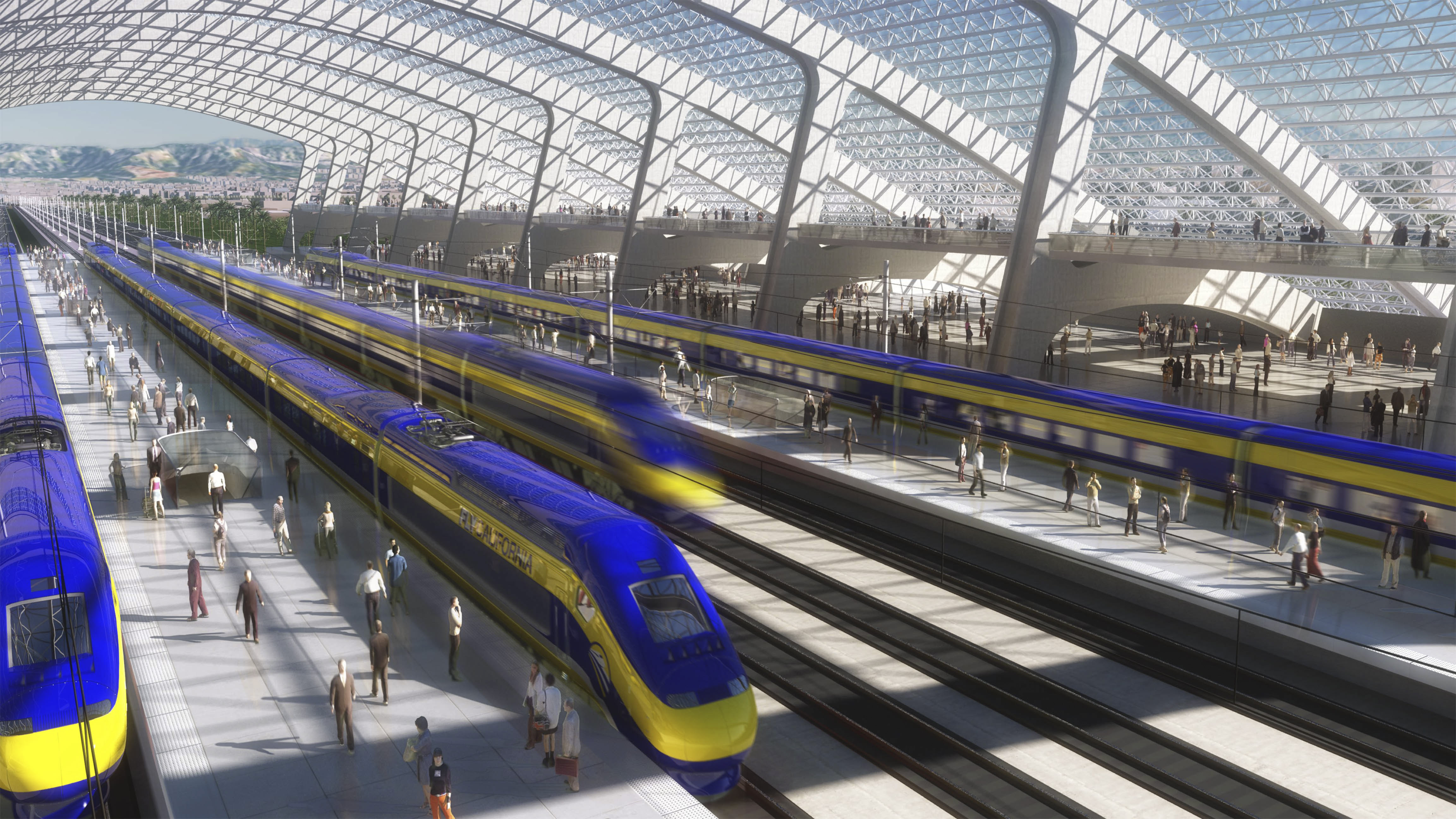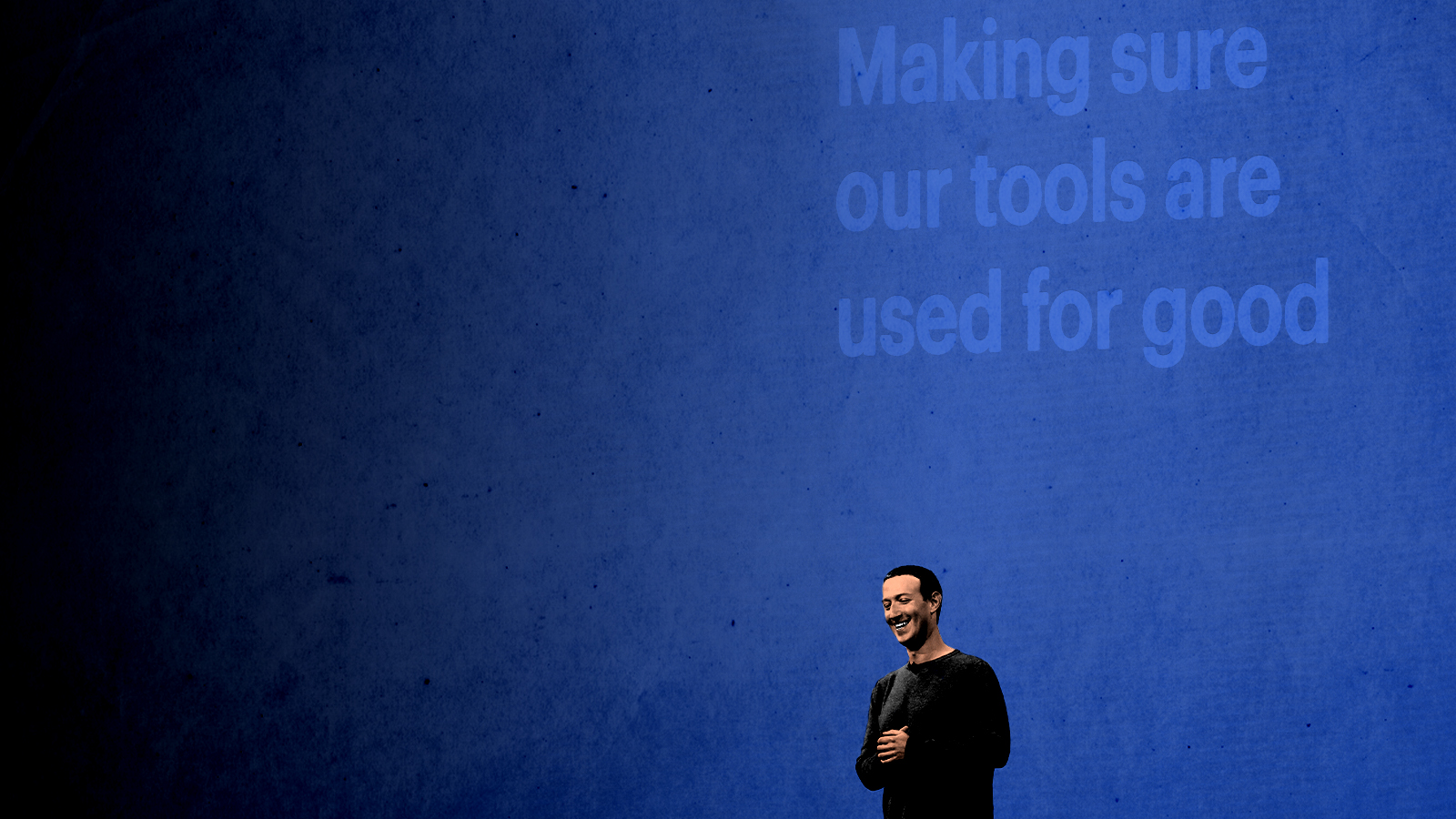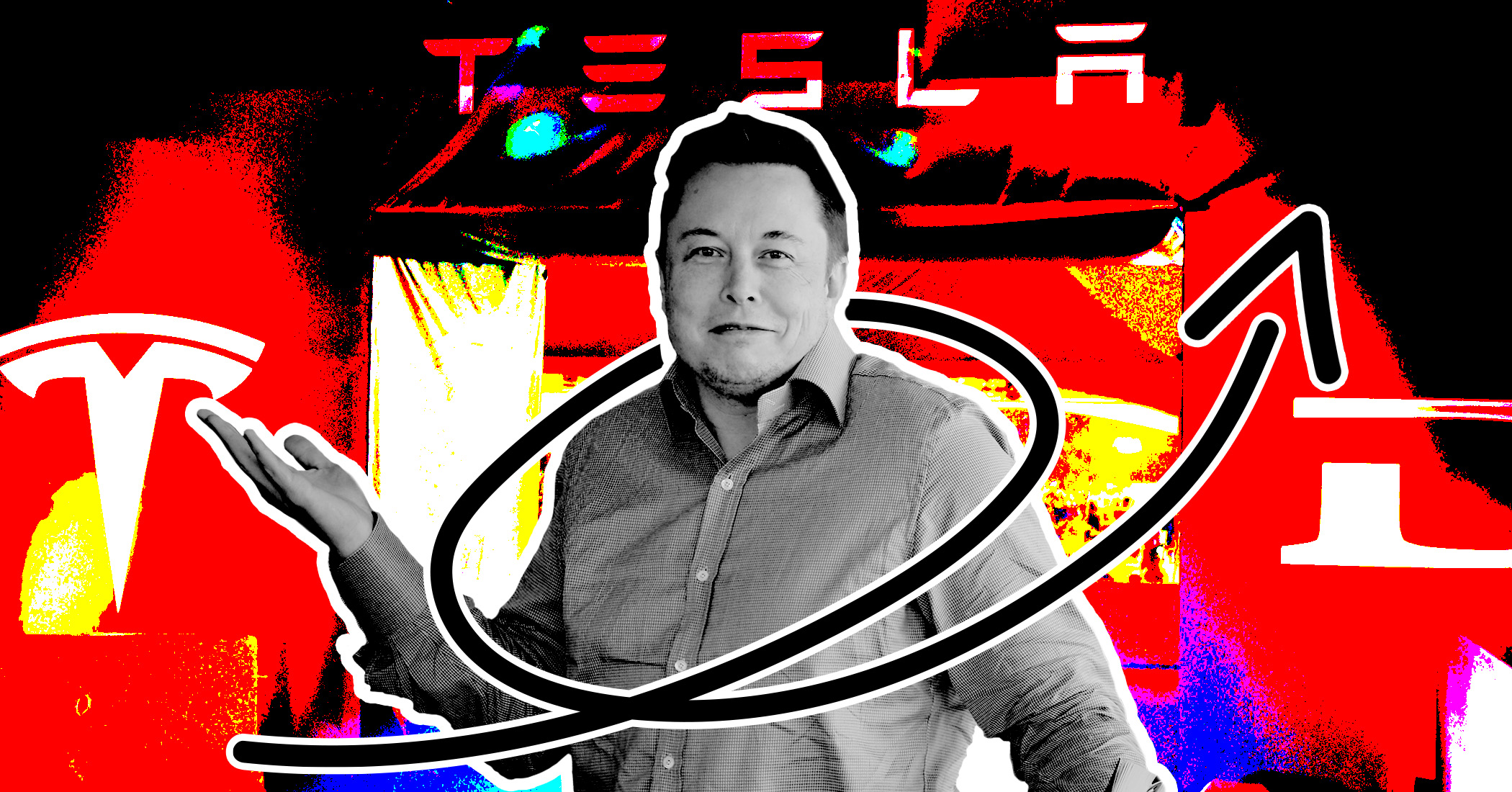The most expensive public-works project in U.S. history
Will California's bullet train ever leave the station?

What will the bullet train do?
If it's ever completed, the train will whisk passengers at 220 mph from Los Angeles to San Francisco in two hours and 40 minutes — half the usual six-hour car journey. That futuristic vision convinced California voters to approve a 2008 referendum authorizing a $10 billion bond package to help finance the train's construction by 2029. The original projected cost was $33 billion. But from day one, the mammoth project has been plagued by lawsuits, land disputes, and budget overruns. Work finally got underway on the first $1 billion, 29-mile, Central Valley stretch of the 520-mile track in January — two years behind schedule. But with the projected cost swelling to $68 billion — the most expensive public-works project in U.S. history — and Republicans determined to derail the project, many wonder whether the bullet train will ever become a reality. "The project is about to enter a tunnel of uncertainty," said political professor Jack Pitney. "We don't know what's on the other side."
Why build this railway?
The Week
Escape your echo chamber. Get the facts behind the news, plus analysis from multiple perspectives.

Sign up for The Week's Free Newsletters
From our morning news briefing to a weekly Good News Newsletter, get the best of The Week delivered directly to your inbox.
From our morning news briefing to a weekly Good News Newsletter, get the best of The Week delivered directly to your inbox.
The U.S. lags far behind Europe and Asia in high-speed rail transportation, and the bullet train was promoted by California Gov. Jerry Brown and President Obama as a way to drag American mass transit into the 21st century. California seemed an ideal fit for the project: The state is renowned for its traffic-choked freeways, and congestion is only going to get worse as California's population balloons to an estimated 50 million people by 2050. Then there are the economic benefits of the railway, which will eventually be extended from San Diego to Sacramento. Supporters say the 24 stations along the route will enable people in the middle of the state to commute to big-city jobs now beyond their reach, leading to the creation of 450,000 permanent jobs. But that presupposes that the bullet train ever makes it onto the tracks.
What's stopping it?
First, there's the question of land. The railway won't travel along California's heavily developed coast, but instead will cut a weaving pathway inland to the east, through the Central Valley. So far, California officials have acquired only 101 of the needed 526 parcels of territory needed to construct the first 29-mile, Central Valley section of the railroad. They've been hindered by multiple lawsuits from farmers, residents who live near the projected path, and environmentalists worried about the carbon costs of such a gargantuan construction project. But supporters say the bullet train would ultimately produce a steep cut in the number of carbon-intensive car and air journeys between the two cities.
What about funding?
A free daily email with the biggest news stories of the day – and the best features from TheWeek.com
That's the biggest problem. In 2014, the California legislature agreed to funnel 25 percent of future cap-and-trade revenues collected through state carbon emissions regulations to the project — or about $1 billion annually. But combining those funds with a $3.3 billion federal stimulus package and the $10 billion bond measure would still provide only $26 billion — under half the estimated total cost. Rail officials are counting on private investors to fund a third of the project, as they did in Japan. But Republicans, who have vowed to block further public funding, remain skeptical the tracks will ever extend beyond the Central Valley. "It's hard to celebrate breaking ground on what is likely to become abandoned pieces of track," says U.S. Rep. Jeff Denham, a Republican.
Why are the opponents so skeptical?
Critics say the project will undoubtedly cost even more than currently estimated and run into countless unforeseen problems. State Sen. Mark DeSaulnier, a Democrat, said he supports high-speed rail in theory, "but when you get into the details — I just don't think people have put enough effort into the details." Other former bullet train supporters say the original ballot measure promised a train that would zip passengers from downtown Los Angeles to downtown San Francisco, when in reality the journey will begin and end on slower, already-existing tracks in both cities before hitting top speed out in the Valley. But High-Speed Rail Authority head Dan Richard still claims that the trip will total less than three hours, with no transfers. "The voters are going to get exactly what they asked for," Richard says.
Will the train get built?
It could go either way. As skepticism has grown, critics are trying to put a new referendum on the ballot to cancel the bullet train. So far, they haven't gotten the necessary 500,000 signatures. But the project could be about to take on an unstoppable momentum: Thanks to a quirk in federal funding requirements, California will need to spend at least $4 billion on the railway by Oct. 1, 2017 — $3 million to $4 million every calendar day for the next 1,000 days. "Before, you never knew if and when the project would really get going," says political scientist Larry Gerston. "Now, as those tracks get laid, mile by mile, it gets harder and harder to turn back."
Musk's high-speed alternative
For some transport visionaries, high-speed rail isn't futuristic enough. Why plow billions into a bullet train that will already be outdated by 2030, they argue, when California could instead invest in genuinely cutting-edge transportation projects? The most revolutionary proposal to replace the bullet train is undoubtedly the Hyperloop. The brainchild of inventor and Tesla CEO Elon Musk, the Hyperloop would zip passengers in capsules through a vacuum tube from San Francisco to Los Angeles at staggering speeds up to 760 mph — in just a half hour. The billionaire is so convinced his high-speed pods are the vehicles of the future that he's now building a test track in Texas and raising funding for further research. He says the Hyperloop could be built for $6 billion to $10 billion — a fraction of the bullet train's cost. "You could have about 70 pods between Los Angeles and San Francisco that leave every 30 seconds," said Musk. "It's like getting a ride on Space Mountain at Disneyland."
-
 How do you solve a problem like Facebook?
How do you solve a problem like Facebook?The Explainer The social media giant is under intense scrutiny. But can it be reined in?
-
 Microsoft's big bid for Gen Z
Microsoft's big bid for Gen ZThe Explainer Why the software giant wants to buy TikTok
-
 Apple is about to start making laptops a lot more like phones
Apple is about to start making laptops a lot more like phonesThe Explainer A whole new era in the world of Mac
-
Why are calendar apps so awful?
The Explainer Honestly it's a wonder we manage to schedule anything at all
-
 Tesla's stock price has skyrocketed. Is there a catch?
Tesla's stock price has skyrocketed. Is there a catch?The Explainer The oddball story behind the electric car company's rapid turnaround
-
 How robocalls became America's most prevalent crime
How robocalls became America's most prevalent crimeThe Explainer Today, half of all phone calls are automated scams. Here's everything you need to know.
-
 Google's uncertain future
Google's uncertain futureThe Explainer As Larry Page and Sergey Brin officially step down, the company is at a crossroads
-
 Can Apple make VR mainstream?
Can Apple make VR mainstream?The Explainer What to think of the company's foray into augmented reality


